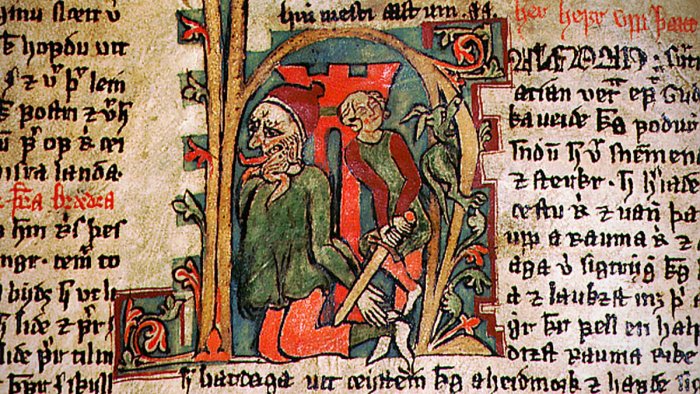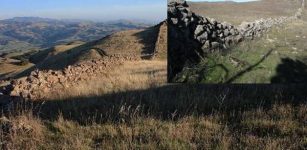Vikings Had Dark Humor And Joked Even During Deadly Battles
MessageToEagle.com – Historical studies of Icelandic Sagas reveal Vikings had dark humor and joked even during deadly battles.
It was a mixture of sarcasm, irony and unusual jokes. The Vikings approach was that, if you knew you were going to die, why not do it laughing.
Death was never something Viking feared because they believed that a warrior who died in battle was rewarded and could join all other great fighters in Valhalla, a majestic, enormous hall located in Asgard, ruled over by the great god Odin.
Written during the Middle Ages, Icelandic Sagas tell stories of Vikings and usually, the tales all centered around various kinds of disputes that ended in battles between the Vikings. Often two or more families could be involved in blood feuds that lasted decades or generations.
According to historian Trine Buhl at the Århus University in Denmark, authors of the Icelandic Sagas deliberately added dark humor to their tales, without it the stories would be boring.

There are several examples of sarcasm and dark humor in the Sagas. For example in the Droplaugarsona Saga, written sometime in the 13th century tells about Droplaug’s two sons, Grímr and Helgi.
When the Viking Helgi gets his lower lip cut off in a battle, he says to his opponent:
“I have never been particularly handsome and you haven’t exactly improved my attractiveness.”
This remark shows Viking Helgi possessed self-knowledge and self deprecating humor.

In the Gunnlaug Ormstungas Saga, a famous Icelandic saga that is over 1,000 year old, we encounter Viking Gunnlaug who falls in love with a young woman named Helga.
Gunnlaug embarks on a long and adventurous journey and when he retunrs home, he discovers that his beloved Helga was forced to marry Hrafn, Gunnlaugs enemy.
See also:
Asgard: Enter The Ancient Kingdom Of The Powerful Norse Gods
How Did Vikings Worship Their Gods?
Why Were Viking Raids So Successful?
Explore The Mysterious Ancient World Of The Vikings
This leads to a long, hard battle between the two men. After a while, Gunnlaug uses his sword to cut off Hrafn’s foot.
Gunnlaug is happy and feels this is the end of the battle which he one. However, despite being mutilated his enemy Hrafn yelled:
” It’s true things are not going my way, but I can probably continue a while longer if I just get something to drink!”
The battle ended with the death of both Vikings.
Sarcasm, irony and dark humor was not restricted to Icelandic Sagas. In the Kings’ Sagas we encounter similar jokes often uttered when someone’s life was about to end.
In one chapter we can read about how the Danish King Harald Bluetooth refuses to accept
Sweyn Forkbeard (Sven Tveskägg) as his son. Sweyn Forkbeard is instead raised by Palnatoke,a legendary Danish hero, chieftain of the Island of Fyn and founder of the Jomsvikings Brotherhood.
Sweyn Forkbeard (Sven Tveskägg) is furious when he learns King Bluetooth calls him a bastard. He seeks revenge, gathers his followers and convinces them to wage war on King Harald Bluetooth.

One late evening, Forkbeard’s assassins see the King sitting, calmly relaxing by the fire. When the King bends forward, one of killer shoots with an arrow.
In the Norwegian King’s Sagas the event the author relates the event by writing” According to testimonies of those who knew and witnesses this event, the arrow flew straight into the King’s lowest point, continued through his body and came out of his mouth. Then the King collapsed and died.”
According to historian Trine Buhl, the most popular sagas were those with dark humor. Most researchers agree that the Sagas are based on oral traditions.
From about 900 A.D. to 1000 A.D., the sagas were told by storytellers from one generation to another.
Around the year 1200 A.D. literate men such as monks and other learned med started to write down the Sagas.
Over the years, when the Sagas spread among the Nordic countries the stories became more colorful and often slightly exaggerated.
Some of the stories can have been confirmed because the same verses have been found on rune stones from the Viking Age.
Copyright © MessageToEagle.com This material may not be published, broadcast, rewritten or redistributed in whole or part without the express written permission of MessageToEagle.com










